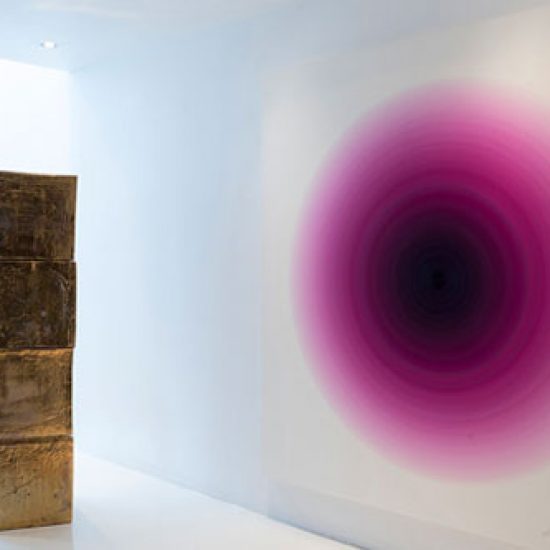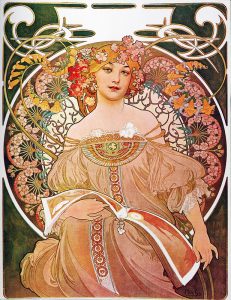About Oliver Marsden
Oliver Marsden was born in the UK in 1973. His artistic practice revolves around perception, the possibilities of movement, and the fluidity of color, sound, and order. Marsden explores the behavior and properties of paint, creating pulsations and echoes of color. Marsden has a formal grounding in geometry that often corresponds to the forms of periodic oscillations, such as the vibrations of simple sounds, like that which a tuning fork can produce.
Oliver Marsden has participated in over 60 group exhibitions in places such as Vigo Gallery, Dubai, UAE (201/); Maddox Gallery London (2017), Kresge Art Museum, Michigan, USA (2010), and held solo exhibitions at venues like Vigo/Liaigre Gallery, London, UK (2020); Galería Hilario Galguera, Mexico City, Mexico (2015), and Koumi Machi Kougen Museum, Koumi, Japan (2009), among others. He has received prestigious awards and recognitions, including the Prince’s Trust Award in England in 2000 and The Arthur Anderson Prize for Best Young Artist, Scotland in 1995. His work is part of important collections around the world, such as the Jumex Foundation, Mexico, and the Horiuchi Collection, Japan, among others.
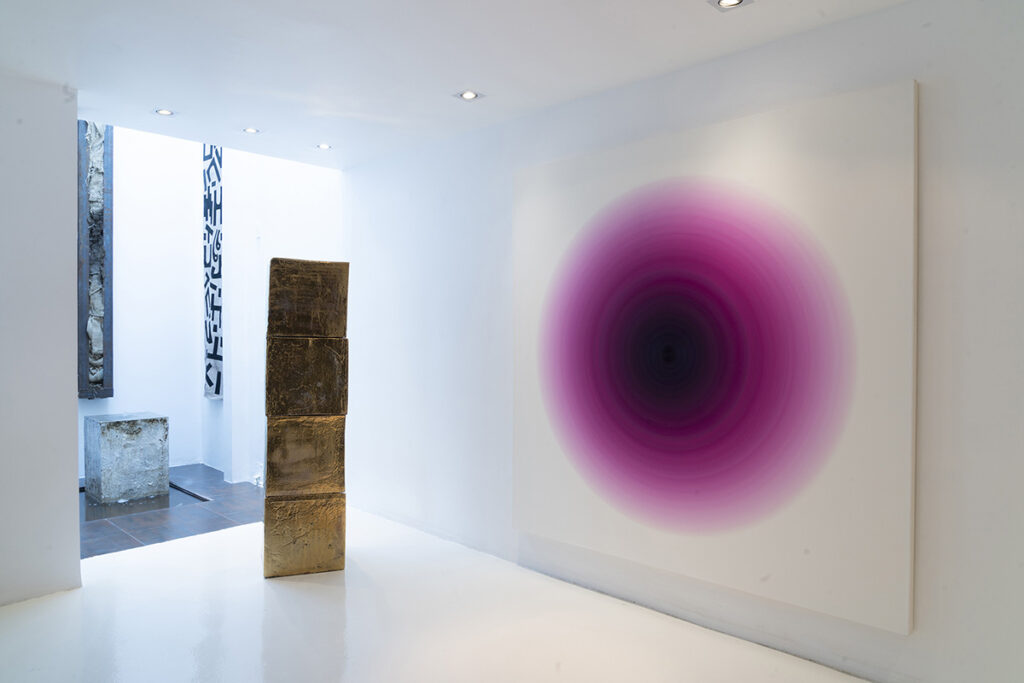
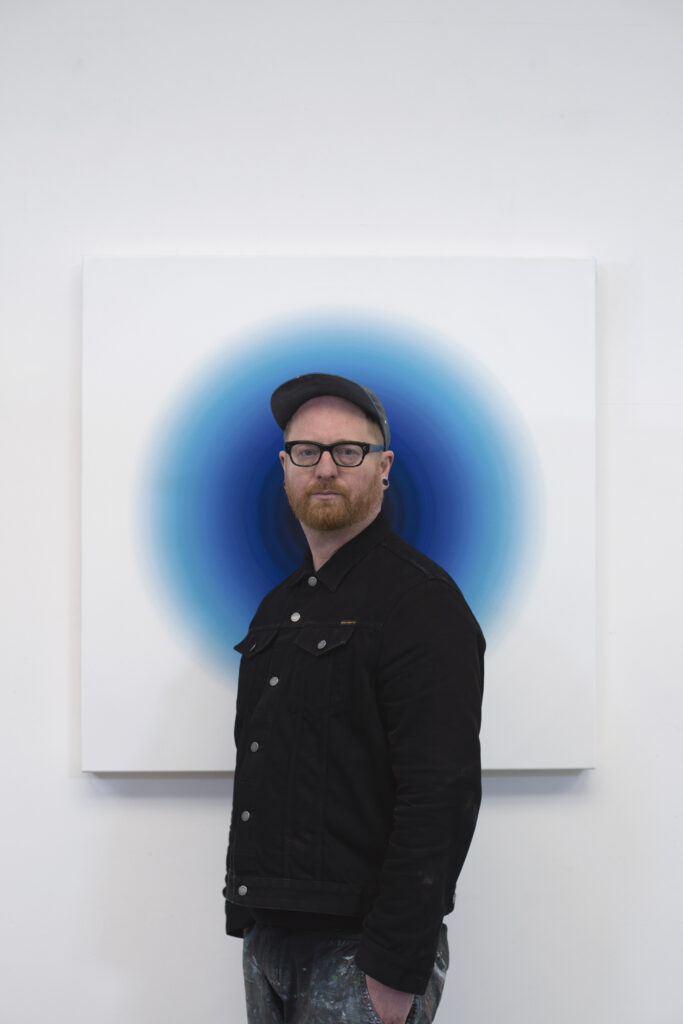
About the Exhibition ‘All We Have Is Now’ by Oliver Marsden
September 12th – November 8th, 2024
Galería Hilario Galguera Madrid is pleased to present the exhibition All We Have is Now, by British artist Oliver Marsden. Through his most emblematic series, the exhibition explores different concepts of synergy between the human condition, technology, and nature from our perceptual capacity. Memory, energy, sound, and spirituality are optimized in minimalist paintings that reflect a universal contemplative understanding.
Expanding the cross-border reach of Marsden’s pictorial language, the exhibition will be presented simultaneously at our Mexico City location, and it will also open in September.
A hypnotic sensation permeates the gallery space. Despite the silence and stillness, circular paintings from different series convey a sense of movement, perhaps evoking their origin: an analysis of the impact of sound on water and the materiality of sound waves led to the creation of the Harmonics series, which later evolved into the OM Halo and Stella series. Even during their creation, the artist remains almost motionless while the paintings rotate on their own to absorb oil or acrylic. The Spiral Void series explores the emptiness that has been studied throughout history in philosophy and art. The circles in the series seem to turn into mirrors, reflecting the doubts and thoughts of each individual.

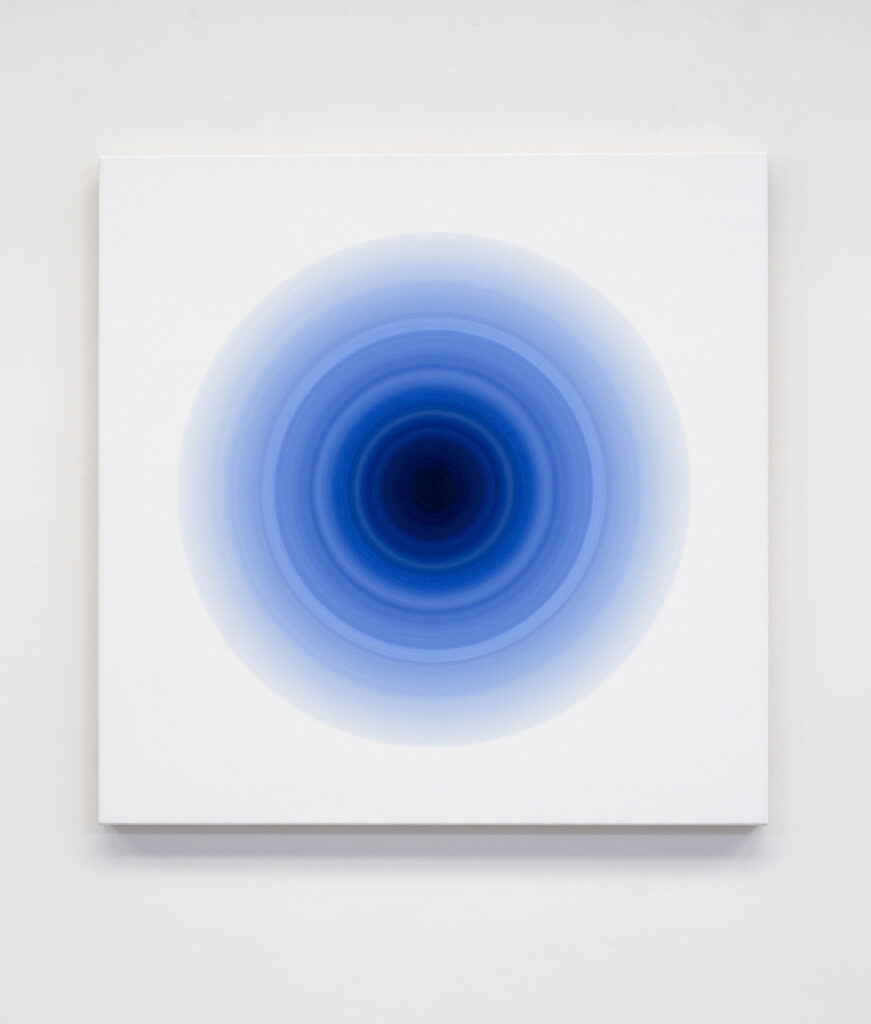
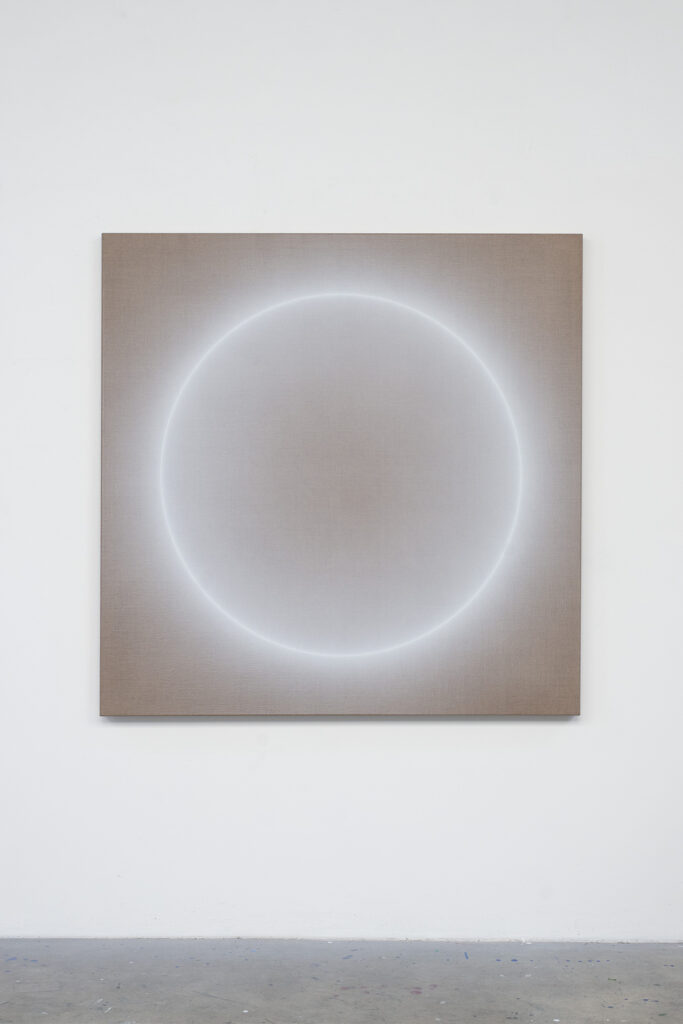
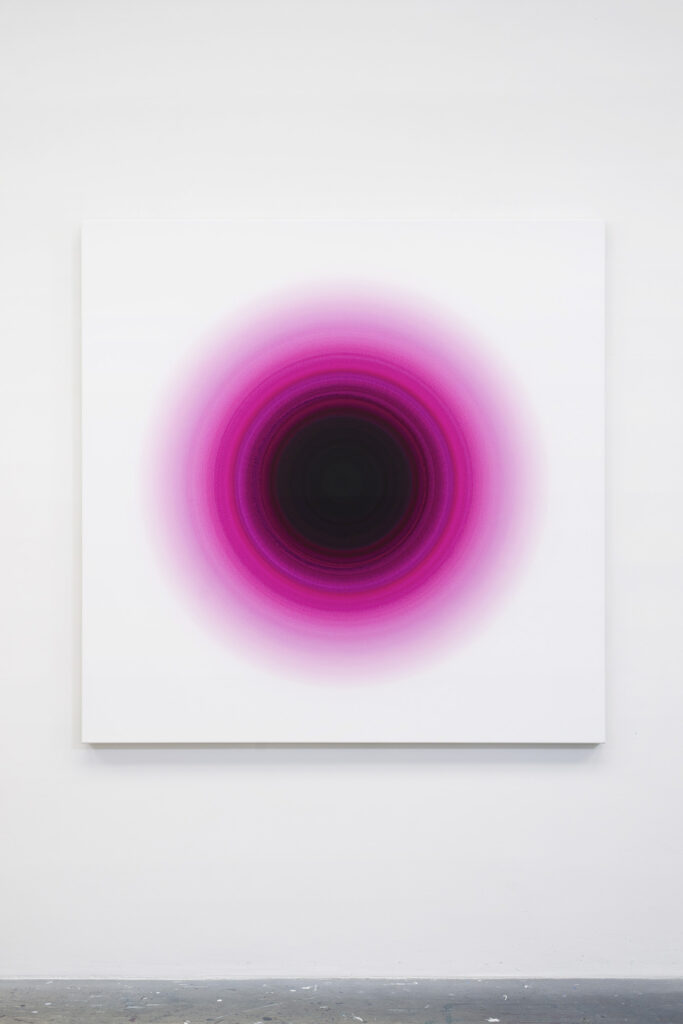
These series create a phenomenon the artist calls a perceptual leap, where the sense of depth is lost, and the viewer feels as if they are inside the painting, in a meditative field. The reduction of the painting to seemingly simple elements and forms is an attempt by the artist to investigate a universal truth when halos and aureoles of saints and Buddhas can be interpreted, but also the displacement of energy in the form of light and sound.
The Grid series examines reality through sacred geometry with meticulously painted grids in acrylic. Inspired by the geometric structures found in nature and the cosmos, these works aim to reveal the order and harmony hidden in the apparent chaos of the contemporary world.
Similarly, the Fade series offers an escape from the disorder and oversaturation of today’s urbanity. Its faded colors are ghosts of the way the artist stores memories in his mind. Memories of family moments, the movement and feeling of air, sunsets, sunrises, or fog, the artist captures specific moments with gradient tones, seeking to replicate the sensation of each experience, turning a unique experience into universal feelings.
All We Have is Now invites us to lose ourselves for a moment in the present, capturing our gaze and captivating us with a language that transcends cultural differences to offer an introspective space for reflection and peace. Marsden’s work comes as a much-needed breath before our return to everyday life.
The exhibition will open at Galería Hilario Galguera Madrid on September 12th and remain open to the public until November 8th, 2024.
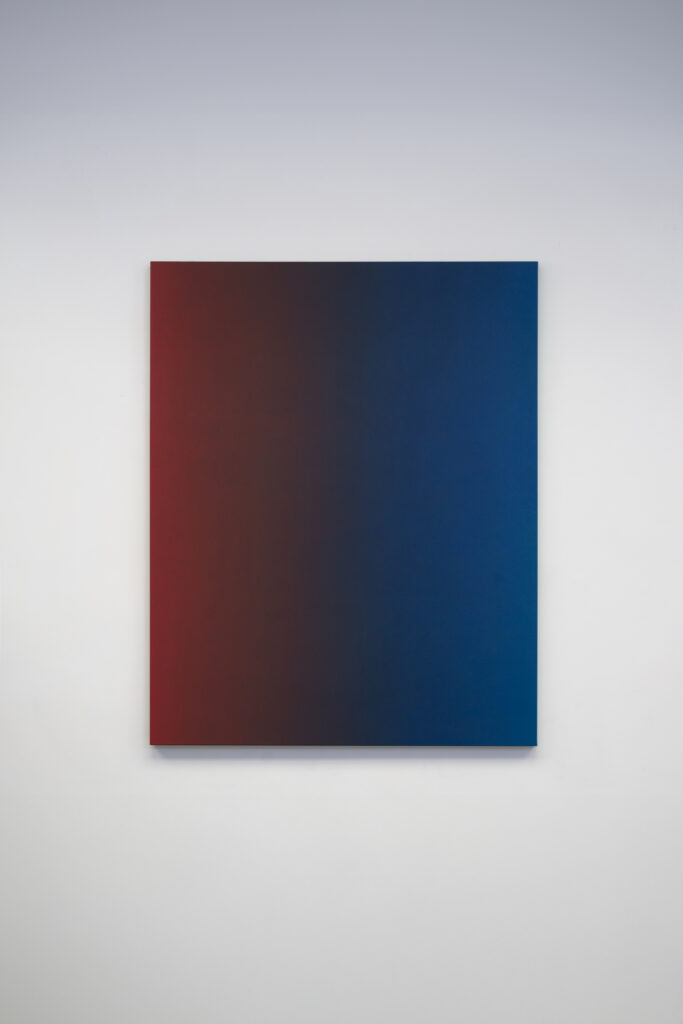

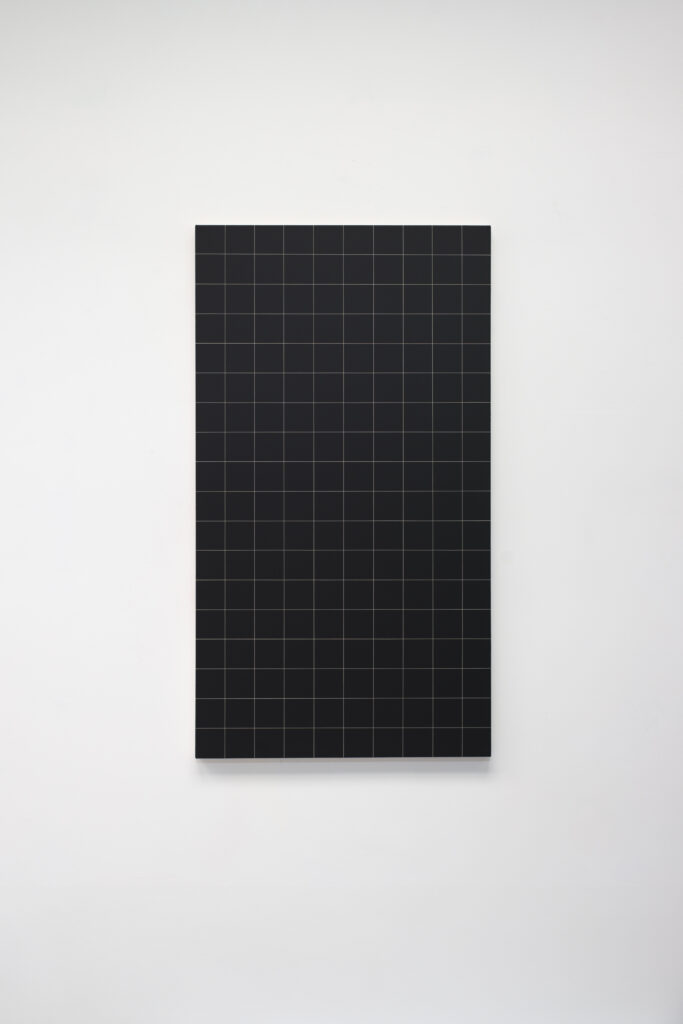
About the Galeria Hilario Galguera
Galería Hilario Galguera opened in Mexico City in 2006 as a space for the discussion and promotion of Mexican and international contemporary art. Since then, it has showcased and disseminated the work of artists known for their relevant and complex proposals on conceptual, social, political, and formal levels, as well as for their aesthetic rigor and precision.
Currently, the Hilario Galguera Gallery operates in both Mexico City and Madrid, representing artists such as David Bailey, Willem Boel, Maxime Brigou, James hd Brown, Peter Buggenhout, Daniel Buren, Marie Cloquet, Stijn Cole, John Copeland, Maisie Cousins, Martin Eder, Israel Gonzáles Matador, Damien Hirst, Athina Ioannou, Enrique Ježik, Jannis Kounellis, Perla Krauze, Francisco Larios, Daniel Lezama, Oliver Marsden, Gabriel O’Shea, Roosmarijn Pallandt, Issa Salliander and Bosco Sodi.
Go here to follow Oliver Masden on Instagram >
Read similar posts on Hue&Eye >>>

